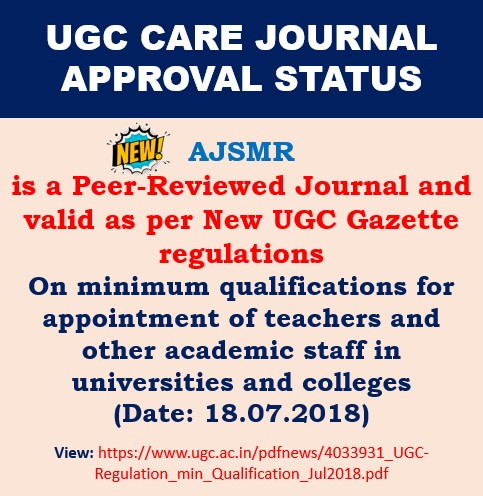Original Research Article I Volume 10 I Issue 2 I 2024
Sustainable Water Resource Management and Conservation
Raju Porika and Rajitha Tungani
The American Journal of Science and Medical Research (2024), 10(2); 7-10
DOI: https://doi.org/10.5281/zenodo.11075572
Abstract:
Water is precious natural resource for sustaining life and environment. Effective and sustainable management of water resources is vital for ensuring sustainable development. In view of the vital importance of water for human and animal life, for maintaining ecological balance and for economic and developmental activities of all kinds, and considering its increasing scarcity, the planning and management of water resource and its optimal, economical and equitable use has become a matter of the utmost urgency. Management of water resources in India is of paramount importance to sustain one billion plus population. Water management is a composite area with linkage to various sectors of Indian economy including the agricultural, industrial, domestic and household, power, environment, fisheries and transportation sector. The water resources management practices should be based on increasing the water supply and managing the water demand under the stressed water availability conditions. For maintaining the quality of freshwater, water quality management strategies are required to be evolved and implemented. Decision support systems are required to be developed for planning and management of the water resources project. India has 16% of the world’s population and only 4% of the world’s water resources, which are depleting rapidly. The demand for water is expected to grow from 40 billion cubic metres (bcm) currently to around 220 bcm in 2025. Water is one of the most important inputs essential for crops. Both its shortage and excess affects the growth and development of the plants, yields and quality of produce. There are numerous methods to reduce such losses and to improve soil moisture.
Keywords:
Water Conservation, Water Demand Management, Water Resource Planning, Water, Conservation, Technology, Rainwater-Harvest, Drip-Irrigation.
References:
- Jain, S. K., Agarwal, P. K. and Singh, V. P., Hydrology and Water Resources of India, Springer Verlag, The Netherlands, 2007.
- Srinivas, G.; Boominathan; Estari, M. Studies of efficiency of immobilised bacteria in tannery effluent treatment. Journal of Biology Innovation, v. 2, No. 2, p. 33-42, 2013. Available from: http://www.jbino. com/docs/Issue02_01_2013.pdf>. Accessed on: Nov. 24, 2017.
- Falkenmark, M., Lundquist, J. and Widstrand, C., Macro-scale water scarcity requires micro-scale approaches: aspects of vulnerability in semi-arid development. Nat. Resource. Forum, 1989, 13(4), 258–267.
- Jain, S. K., Water resource management in India. Curr. Sci., 2017, 113(7), 1211–112.
- Canter, L. and Swore, T., Handbook for Cumulative Effects Assessment and Management, U.S. Army Corps of Engineers, Washington, D.C., USA, 2011.
- Singh, A., Dipankar, S. and Tyagi , A. C. (eds), Water Governance: Challenges and Prospects, Springer Nature, Singapore, 2019.
- NCIWRD, The Report of National Commission for Integrated Water Resources Development Plan, Ministry of Water Resources, Government of India, 1999.
Article Dates:
Received: 18 January 2024; Accepted: 21 February 2024; Published: 05 April, 2024
How To Cite:
Porika, R et al. (2024). Sustainable Water Resource Management and Conservation. The American Journal of Science and Medical Research, 2024. 10(2), 7–10.https://doi.org/10.5281/zenodo.11075572



